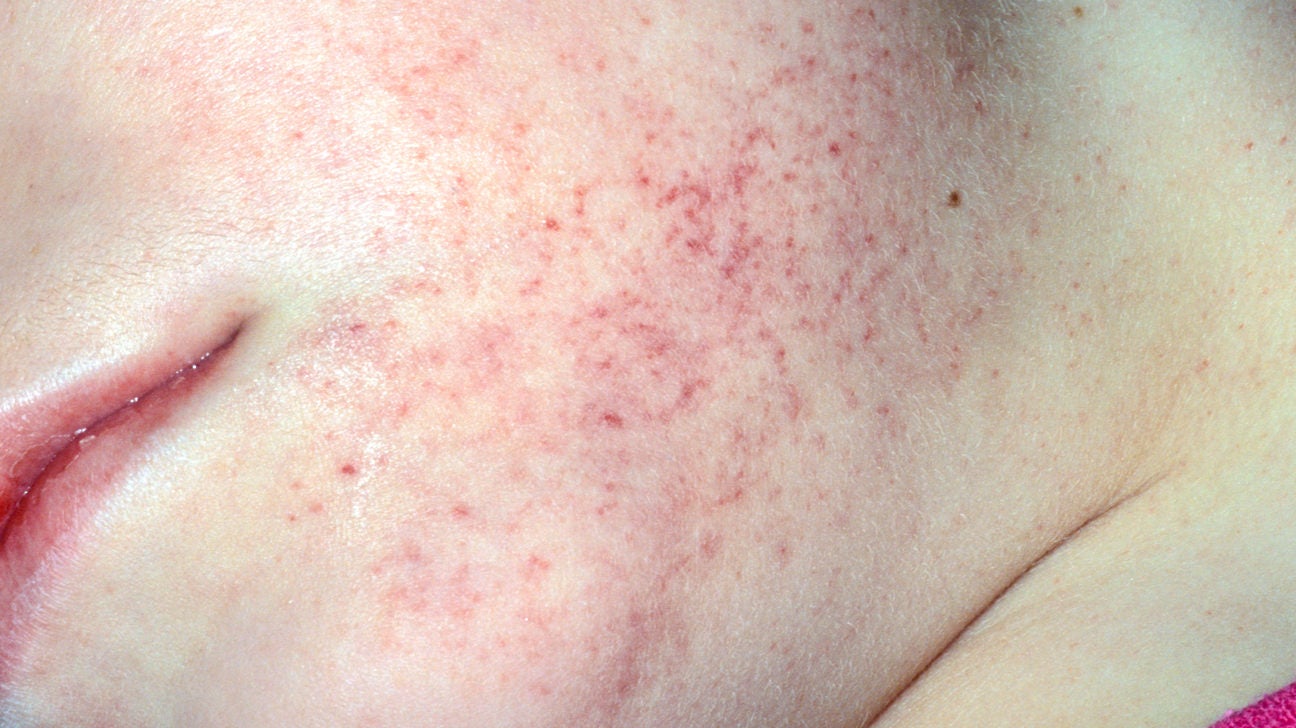

This may occur in any patient but especially in those given penicillin family medications such as ampicillin or amoxicillin.

There is also an increased rate of noninfectious drug rashes in those receiving medical therapy for HIV. HIV causes many types of rashes, both nonspecific viral reactions as well as infection-associated rashes.Herpes zoster causes chickenpox and shingles.HSV infections may also cause erythema multiforme (minor), which is characterized by tender bull's eye-like targets on the palms, usually corresponding to an HSV flare. Herpes simplex (HSV) types I and II may cause infections of the lips, nose, facial skin, genitals, and buttocks.These are fairly uncommon in healthy people and are more frequently seen in individuals with a compromised immune system as in HIV/AIDS, immune suppression due to cancer chemotherapy, and patients on long-term immunosuppression because of organ transplant or hematologic diseases. Other much less common fungal infections include cryptococcosis, aspergillosis, and histoplasmosis.It would be unusual to have a Candida rash in a dry body area. Candida can cause common yeast infections in moist areas like between the fingers, in the mouth, vaginal area, and also in the groin folds.This infectious rash is called tinea or ringworm. Trichophyton is a type of skin fungus that commonly causes rashes of the skin, hair, and nails.In a broad sense, rashes are commonly categorized as infectious or noninfectious.Ĭauses of infectious rashes include: Fungal Skin rashes have an exhaustive list of potential causes, including infections. Trichophyton is a type of skin fungus that causes skin rash (tinea or ringworm). The treatment may need to be modified pending various laboratory and special skin examinations. Based on the health care provider's initial impression of a rash, treatment may be started.

The reported history will help characterize the duration, onset, relationship to various environmental factors, skin symptoms (such as itching and pain), and constitutional symptoms such as fever, headache, and chills. Most of these are not serious but can be very irritating. There are some rashes that only appear in association with pregnancy, either during pregnancy or even after the delivery of the baby. The timing of when medications are started and stops may provide important clues for establishing the cause of a rash. A family history of eczema, frequent exposure to sick children, necessary use of immunosuppressive medications, and exposure to multiple medications all increase the risk of developing rashes.Ī careful drug history that includes over-the-counter (OTC) medications, supplements, and prescription drugs such as birth control pills is also important. Many different risk factors determine what rash or rashes a patient might get. Sometimes good quality pictures of an earlier stage of the rash may aid diagnosis. Treatments that work may be a clue to the cause of the rash, may mask symptoms, or change the appearance, making a definite diagnosis harder.

Accurate information about past treatments, successful and unsuccessful, is very important. All of these factors are important in identifying the correct diagnosis. Infectious agents that can cause a rash include viruses, bacteria, fungi, and parasites.ĭetermining the specific cause of rash usually requires a description of the skin rash, including its shape, arrangement, distribution, duration, symptoms, and history. Infection-associated rashes, such as ringworm (tinea), impetigo, Staphylococcus, scabies, herpes, chickenpox, and shingles, are treated by treating the underlying cause. Even a noncontagious, noninfectious rash can cause discomfort and anxiety. Many noninfectious rashes are typically treated with corticosteroid creams and/or pills. Noninfectious rashes include eczema, contact dermatitis, psoriasis, seborrheic dermatitis, drug eruptions, rosacea, hives ( urticaria), dry skin ( xerosis), and allergic dermatitis. While there are many different types, rashes may basically be divided into two types: infectious or noninfectious. Rashes may be divided into two types: infectious or noninfectious.


 0 kommentar(er)
0 kommentar(er)
